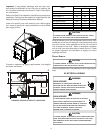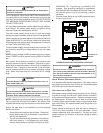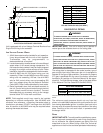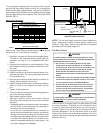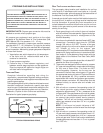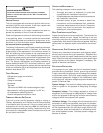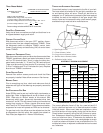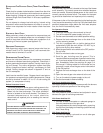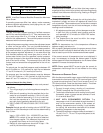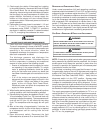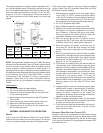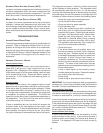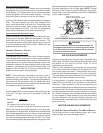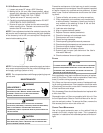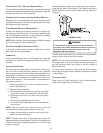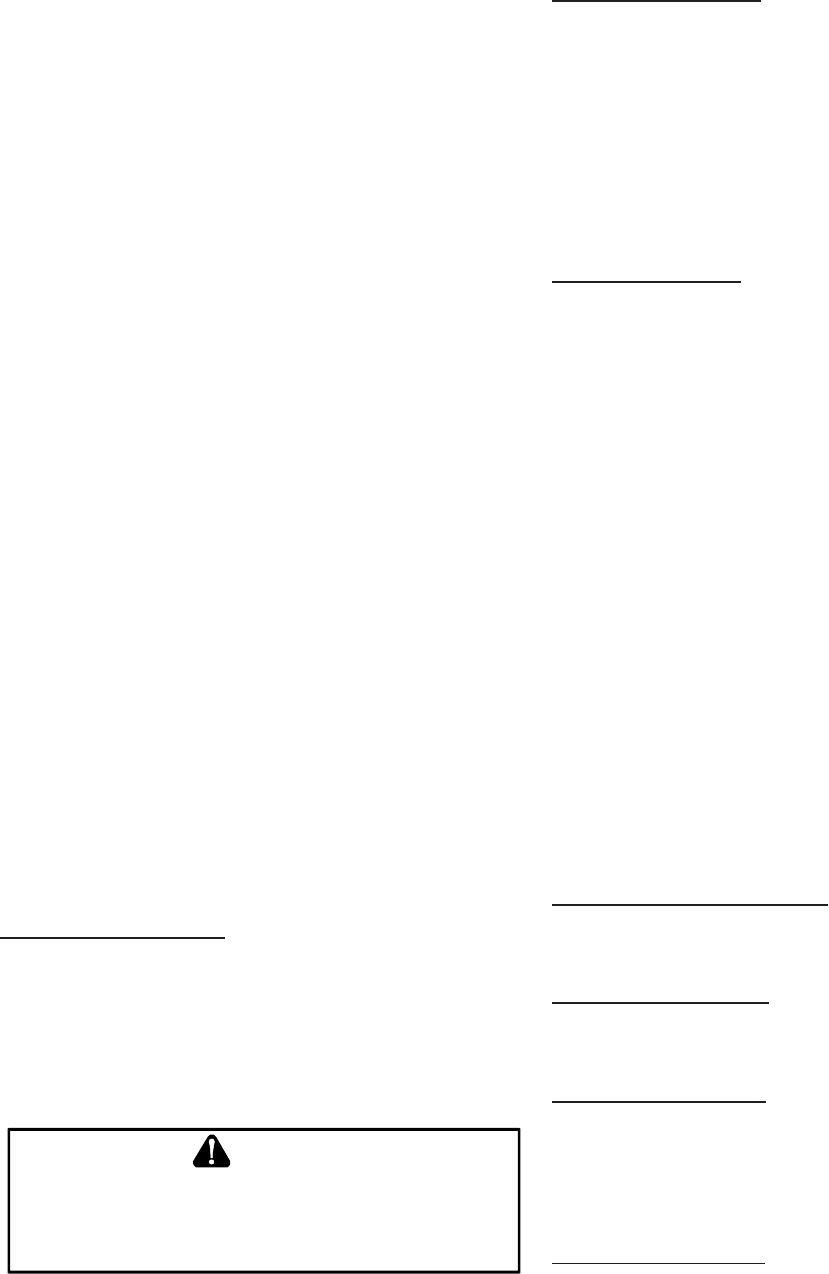
16
EVAPORATOR FAN ROTATION CHECK (THREE PHASE MODELS
ONLY)
Check that fan rotates clockwise when viewed from the drive
side of unit and in accordance with rotation arrow shown on
blower housing. If it does not, reverse any two incoming power
cables at Single Point Power Block. In this case, repeat bear-
ing check.
Do not attempt to change load side wiring. Internal wiring
assures all motors and compressors will rotate in correct di-
rection once evaporator fan motor rotation check has been
made.
ELECTRICAL INPUT CHECK
Make preliminary check of evaporator fan ampere draw and
verify that motor nameplate amps are not exceeded. A final
check of amp draw should be made upon completion of air
balancing of the duct system (see Appendix C).
RESTORING CONNECTIONS
With disconnect switch open, remove jumper wire from ter-
minals R and G at TB1 terminal block, and reconnect ther-
mostat wires to terminals Y and W.
REFRIGERATION SYSTEM CHECKS
Ensure the hold-down bolts on the compressor are secure
and have not vibrated loose during shipment. Check that vi-
bration grommets have been installed. Visually check all pip-
ing and clamps. The entire refrigeration system has been
factory charged and tested, making it unnecessary to field
charge. Factory charges are shown in Appendix C and on
the unit nameplate.
Install service manifold hoses. Gauges should read satura-
tion pressure corresponding to ambient temperature. Charge
should be checked to obtain 12° to 15° of sub-cooling per
system (i.e. compressor circuits).
Rollout Protection Control
The rollout protection device opens, cutting power to the
gas valve, if the flames from the burners are not properly
drawn into the heat exchanger. The rollout protection
device is located on the burner bracket. The reason for
elevated temperatures at the control should be
determined and repaired prior to resetting this manual
reset control.
T
O
AVOID
PROPERTY
DAMAGE
,
PERSONAL
INJURY
OR
DEATH
DUE
TO
FIRE
OR
EXPLOSION
,
A
QUALIFIED
SERVICER
MUST
INVESTIGATE
THE
REASON
FOR
THE
RO LLOUT
PROTECTION
DEVICE
TO
OPEN
BEFORE
MANUALLY
RESETT ING
THE
ROLLOUT
PROTECTION
DEVICE
.
WARNING
Secondary Limit Control
The secondary limit control is located on the top of the blower
scroll assembly. This control opens when elevated tempera-
tures are sensed. Elevated temperatures at the control are
normally caused by blower failure. The reason for the open-
ing should be determined and repaired prior to resetting.
If the power to the unit is interrupted during the heating cycle,
it may cause the secondary limit to trip. Once the blower com-
partment temperature drops below the limit reset tempera-
ture, the limit will automatically reset.
Pre-Operation Checks
1. Close the manual gas valve external to the unit.
2. Turn off the electrical power supply to the unit.
3. Set the room thermostat to its lowest possible setting.
4. Remove the heat exchanger door on the side of the
unit by removing screws.
5. This unit is equipped with an ignition device which
automatically lights the main burner. DO NOT try to
light burner by any other method.
6. Move the gas control valve switch to the OFF position.
Do not force.
7. Wait five minutes to clear out any gas.
8. Smell for gas, including near the ground. This is
important because some types of gas are heavier than
air. If you have waited five minutes and you do smell
gas, immediately follow the warnings on page 3 of
this manual. If having waited for five minutes and no
gas smell is noted, move the gas control valve switch
to the ON position.
9. Replace the heat exchanger door on the side of the
unit.
10. Open the manual gas valve external to the unit.
11. Turn on the electrical power supply to the unit.
12. Set the thermostat to desired setting.
Gas Supply And Manifold Check
Gas supply pressure and manifold pressure with the burners
operating must be as specified on the rating plate.
Gas Inlet Pressure Check
Gas inlet pressure must be checked and adjusted in accor-
dance to the type of fuel being consumed.
With Power And Gas Off:
1. Connect a water manometer or adequate gauge to
the inlet pressure tap of the gas valve.
Inlet gas pressure can also be measured by removing
the cap from the dripleg and installing a predrilled cap
with a hose fitting.
With Power And Gas On:
2. Put unit into heating cycle and turn on all other gas
consuming appliances.



